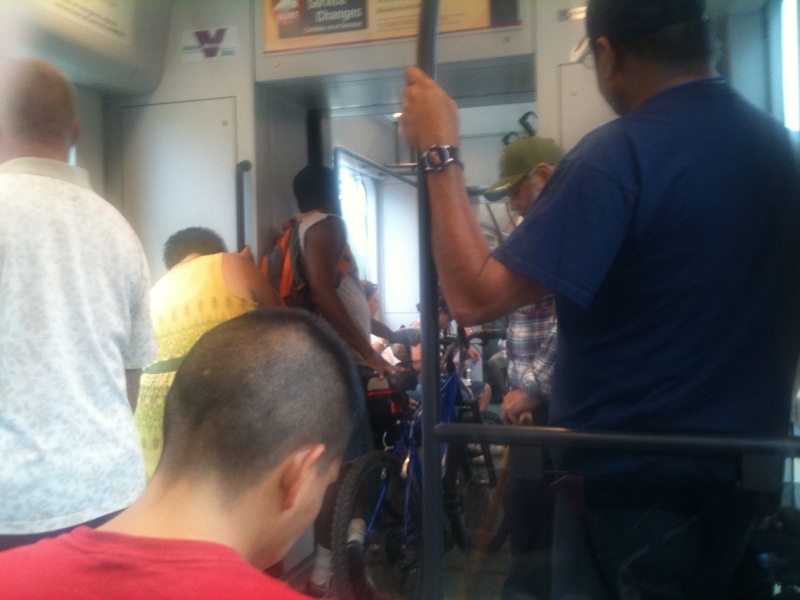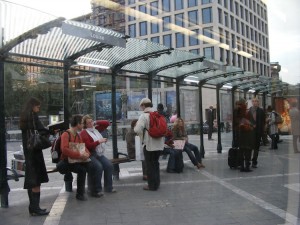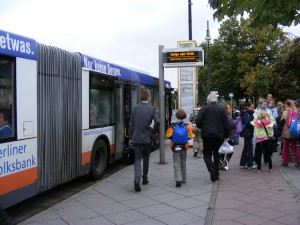 According to Carol Venolia in her article Real Time in Natural Home Magazine, modern day society is moving away from direct experiences, such as actually spending time with our friends, and moving more towards indirect experiences such as chatting online instead. This distancing from real experiences, the author argues, creates a less satisfying and perhaps somewhat of a distorted life.
According to Carol Venolia in her article Real Time in Natural Home Magazine, modern day society is moving away from direct experiences, such as actually spending time with our friends, and moving more towards indirect experiences such as chatting online instead. This distancing from real experiences, the author argues, creates a less satisfying and perhaps somewhat of a distorted life.
The idea of direct versus indirect experiences is very much tied into the concept of propinquity which was first introduced to me by Kevin Kellogg. Propinquity, if you’re unfamiliar with the word, “refers to the physical or psychological proximity between people” according to Wikipedia. It can only occur through direct experience. It can’t happen if you’re at home, chatting with your friends online while watching a reality show on mute and listening to satellite radio.
Why are propinquity and direct experience good? Why shouldn’t we just ride the wave of technology and allow it to distance us from the real world? Because according to Eric Storm, one of the founders of Create the Good Life,
“We’d probably all be a lot happier if we did more…simple, basic things. Whenever we can take the time to fully and directly experience something, we often feel more whole, connected and enriched.”
On an urban level, propinquity and direct experience create a much more vibrant and livable city. Those experiences involving personal interactions and direct sensory engagement are what give a city life. I found all sorts of examples of this in the cities I visited in Europe earlier this year. There seemed to be lots of opportunities to directly experience the city and also to be in proximity to other people. One huge factor contributing to this was simply the emphasis on walking/biking and public transit versus driving.
a typical street in Berlin
When there is a culture of walking or biking, it creates a default opportunity to share space with others. Walking and biking, according to the Natural Home article, are the most “direct” forms of transportation. Not only do they create space for propinquity, but they allow your body to be engaged in the city. For example, you can feel the pavement underneath your feet or your tires, you can hear the cars, you can smell the perfume or cologne of passersby, and feel the breeze on your face.
One of the reasons we lack direct experience and propinquity in Phoenix is our nonexistent walking and biking culture. Our car culture has cost us the fulfillment of our need to connect with the people and the world around us. For the most part, we drive with our windows closed due to the heat or cold and this literally creates a bubble separating us from our environment and other people. This bubble seems to have created a place of “auto-matons” – a disconnected, separate and disengaged populus. Is the convenience afforded by the car worth it?
Besides walking, transit is a fantastic opportunity for propinquity and direct experience. They happen while you’re waiting for your bus, surface or underground rail
bus stop in Brussels
rushing to get inside the bus in Berlin
at an S-Bahn (surface rail) station in Berlin (photo by Paul Loomans)
at a U-Bahn (underground rail) station in Berlin
and it happens when you actually get on the train or bus. What is interesting about being on the train or bus with others is how close you sometimes have to get to other people and sometimes actually touching the strangers around you is unavoidable. This can be annoying, sure, but it’s part of living in a city, part of sharing it with others. The human contact can, in fact, be a reminder that we are indeed in this world with other human beings, whether we like it or not.
With the advent of the Light Rail, we too can participate in the propinquity and direct experience created through the experience of taking transit. Yes, we’ve always had the bus system, but the Light Rail has expanded the opportunity and the actual usage of transit in the Valley. Waiting for the light rail is an extra-special experience in Phoenix because the stations are open and right in the middle of our busy streets. You can watch the traffic, feel the heat, experience a beautiful sunset and sometimes even strike up a conversation with a stranger who’s also waiting.
The best thing about actually being in the city, either by walking, taking transit or otherwise spending time in a public space, is that it puts you face to face with people you would normally never see or meet otherwise. It expands your personal experience from your carefully crafted, hand-selected group of friends and acquaintances to whole segments of the population you would never choose to stand next to. Sounds more annoying than anything else right? Well, perhaps. But at the same time, sharing space with people of all walks of life, different political backgrounds, different ethnicities, different sexual orientations and various economic situations has a tendency to humanize people that are different from you. It equalizes the platform, even if it’s just for a moment. And this is why propinquity and direct experience can have a normalizing effect on the human experience as opposed to the ever-distancing technological experience that we find so attractive.
Photo Credit: All photos by the author unless noted otherwise. Top photo taken inside the Phoenix Light Rail.

























I was born in a small town. We had a car culture to be sure, but the size of the town made it very personal. I find myself doing things to make the larger city where I live seem smaller, and the idea of propinquity pretty much sums up what I’m seeking.
One question: Care to comment on the observation that none of the people in the photos appear engaged with each other?
Thanks for sharing your perspective and encouraging us to think of ways to enrich our lives.
Allison, good question. On our light rail, people often will strike up conversation with someone sitting next to them. But in Europe, I’ve noticed people generally keep to themselves on the trains and buses. I do think being in the same space as people, even if you’re not talking with each other, is a form of direct experience and propinquity. But you’re right that we can’t get by with these anonymous trips on transit together. We need higher levels of human interaction and we can get those at the gathering places of our communities, like the ones Steve mentions.
You propose the most sustainable ideas for interaction, but for some, we venture in perhaps a more time-honored social event.
We meet at local taverns. In the warm glow of neon beer signs,out of date Xmas lights and the friendships of old and new friends, tales are told, bets are made,secrets are displayed and kept, a neighborhood is established.
Long live the Bikini Lounge, Lost Leaf, Carlys, Paisley Violin, and R.I.P. The Newsroom, Four Kings, Paper Heart and Chez Nous.
I agree Steve, we tend to lose the magic of age-old gathering spots amidst the hustle and bustle of life and our dependence on digital interactions. Hooray for the spots you mentioned plus new ones like the Living Room and the upcoming Filmbar!
[…] And of course, being on a bus or on a Light Rail car sets up all sorts of opportunities for propinquity as […]